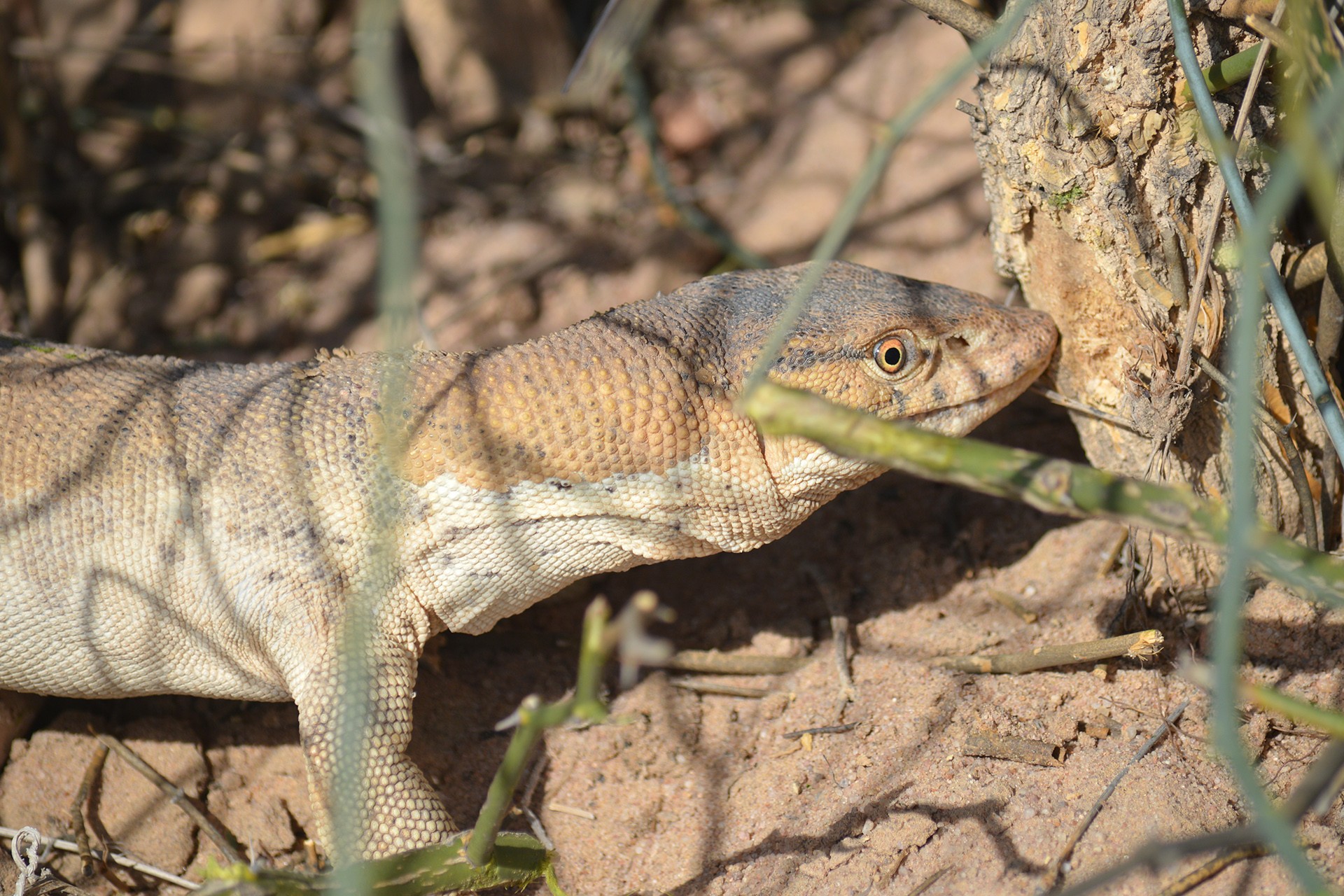Endangered Species Day fell on May 19 this year. To call attention to the wildlife we’re most in danger of losing, Nature inFocus has launched a multi-part series on endangered species across India. We’ve chosen to focus on each species individually, by asking a researcher who’s been most involved in the fight for their survival to write about them. These aren’t intended to be solely dire missives either – if there’s good news, or a small milestone that’s been achieved in the field, we want to highlight it. If their numbers are inching up with the help of conservationists, researchers, policy makers and nature itself, we want to celebrate this. Here is the third story of the series.
The Indian Desert Monitor is one of three subspecies. Desert monitors, Varanus griseus, are a species of monitor lizards. Three subspecies are known to exist – the Grey Monitor, the Caspian Monitor, and the Indian Desert Monitor, V.g. koniecznyi, which is the smallest of the lot (less than 1m in length), and has the fewest bands across its body and tail. They vary in colour from light brown and yellow to grey, although their young tend to be more brightly coloured. The Indian Desert Monitor's diet consists mostly of invertebrates, but it can also eat other lizards and small mammals.
We don’t know enough about the desert monitor. The species has not yet been assessed by the IUCN. So far, no population assessment of this species has been carried out, and to further complicate matters, many times, people wrongly report sightings of common monitor lizard to be the desert monitor lizard, based only on their similar colouring. The two species can be told apart by a keen eye: morphologically, the the common monitor has a longitudinal ridge on its tail, while the desert monitor has a round tail. Ecologically, the common monitor can adapt to a wide range of environments, but the desert monitor is highly habitat specific.
We do know that its distribution has shrunk in the last decade. The desert monitor’s original range spanned Gujarat, Rajasthan, Uttar Pradesh, Delhi and Haryana. From my personal observations from 2002 to 2005, this species was commonly found in the Thar desert of Rajasthan, Jodhpur, Churu, Bikaner and Jaisalmer districts. We have been following this species in the Thar from 2012. Although we still have a lot to learn about this species, we have observed that the species is no longer common in the areas where it was earlier found. Most importantly, in some areas where both common monitors as well as desert monitors used to exist, now we see only common monitors.
In recent years, its numbers have fallen precipitously. Today, it is estimated that fewer than 200 desert monitors exist in the wild in the Thar desert of Rajasthan. The main reason for the desert monitors’ decline has been widespread habitat destruction, due to urban development and the expansion of agriculture after the introduction of the Indira Gandhi Nahar Project (IGNP), an ambitious irrigation project that aims to “reduce desert and transform desert waste land into agriculturally productive area”, according to its website. Desert monitor populations have also plummeted because of poaching, mostly for their skins, although since 1975, the desert monitor has been listed by the Convention on International Trade in Endangered Species (CITES), making all international trade in this species illegal. More often than not, however, these lizards are killed simply out of fear, and for no other reason.
Scientists are working hard to raise awareness to save the desert monitor. My team and I have attempted to raise awareness about the desert monitor through campaigns targeted at local people and school children. Due to limited time and funds, we have not been able to carry these initiatives out at a large scale. However, we did find that people showed an interest in protecting the desert monitor rather than killing it when they learned that it is non-venomous, and actually helps control rodents, insects and other pests in their agricultural fields.
We need policy-level interventions, and we need them now. No protective policies have been put in place yet, but we urgently need to implement conservation measures – it is critical to conserve the remaining habitat of the desert monitor, and to spread awareness about the species if we are to save it from extinction.
To read more stories from the Endangered Species Series, click here.

